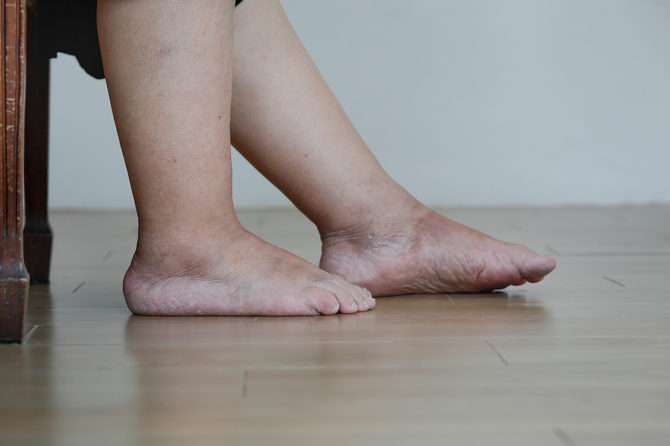
The Truth About Leg Swelling
Let’s face it, our veins are really important and when they aren’t flowing quite right it can cause all sorts of problems. Today we’re going to look at venous insufficiency, venous stasis ulcers, and edema (swelling) of the legs.
What is Venous Insufficiency?
Venous insufficiency is a condition caused by weakened valves in the veins of the legs. Normally, our veins—miraculously fighting gravity—pump blood back up to the heart. But when the valves that pump our blood are damaged, either from a simple malfunction or complications from blood clots, they can’t get the blood back up to where it needs to be.
How Does Venous Insufficiency Happen?
Factors that can contribute to venous insufficiency include advanced age, being female, obesity, sitting or standing for long periods of time, and even simply being tall. The symptoms are much the same as other artery diseases. People may experience pain in the legs when standing, a feeling of heaviness or cramping, swelling and redness, and wounds on the legs that won’t heal.
Venous Stasis Ulcers
One type of wound that may occur is a venous stasis ulcer. These manifest on the skin of the legs, typically above the ankle and below the calf muscle. Because the blood is not moving through your legs, it pools in your veins, and some fluid may leak out into surrounding tissues. The skin in these areas will turn dark red or purple and may become dry, thick, and itchy. Finally, an ulcer will develop.
What Do I Do If I Think I Have an Ulcer?
If you have any symptoms of a venous stasis ulcer, call your podiatrist immediately. They may be able to help prevent an ulcer from forming or treat it before it becomes too large or infected. Your podiatrist can also help determine if your ulcer is a venous, arterial, or neuropathic ulcer. Diagnosis is mostly based on asking questions about your health and a simple examination of the legs. A Doppler ultrasound may also be necessary.
What Can I Do About Leg Swelling?
Even if your only symptom of venous insufficiency is swelling (edema) of the legs, this is still a serious condition that needs to be treated. Luckily, there is an easy treatment for swelling that also helps with healing ulcers.
The first step is to avoid sitting or standing for too long without movement. If you work at a desk most of the day, take five minutes every hour or so to do some simple leg exercises. If you work standing, try elevating your legs on your lunch break and especially when you get home from work.
Compression Aids
The other simple solution to leg swelling that can also help with the healing of ulcers is wearing something that aids in circulation, such as compression socks or hose. These socks and hosiery should provide various levels of compression to suit your needs.
Thin compression sleeves can be worn under almost anything and may feature adjustable straps that can target the best pressure for your particular condition. Search for materials that prevent odor and bacteria and won’t stretch out over time. We give bonus points to all the brands which are also machine washable.
If you have any symptoms of venous insufficiency, venous stasis ulcers, or just simple swelling in the legs, don’t wait to make an appointment. Early detection and treatment can save a lot of hassle, time, and healing down the road. Every little step you can take toward bettering your foot and ankle health will give you the opportunity for many more steps in the future.
Leave a reply